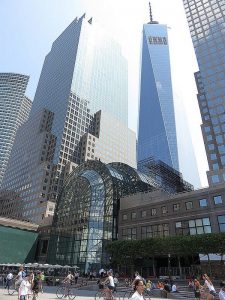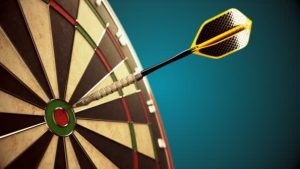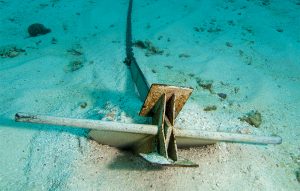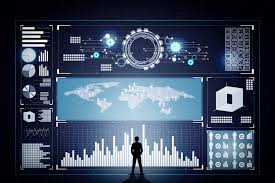Real Estate Industry
Our real estate clients include publicly traded companies with global portfolios to rapidly growing 50-person shops. We have worked across the lifecycle from investment analysis to asset conversion. Data analytics has always been an important part of our work. We generally serve clients in major markets but have experience in emerging markets. Our work overlaps the energy space in Smart Cities and energy efficiency.
 The client makes debt and equity investments in real estate in New York State. The company provides construction financing, mortgage lending and equity capital. Since 1974 it has invested $10.5 billion, creating housing for 965,000 people. Actionable Strategies was referred to transform the IT organization. IT services were not meeting the needs of end users, costs were increasing while service levels were falling, and turnover was rising.
The client makes debt and equity investments in real estate in New York State. The company provides construction financing, mortgage lending and equity capital. Since 1974 it has invested $10.5 billion, creating housing for 965,000 people. Actionable Strategies was referred to transform the IT organization. IT services were not meeting the needs of end users, costs were increasing while service levels were falling, and turnover was rising.
After presenting a heatmap of the major issues, we formulated a strategic plan which we then helped execute. The client successfully completed the transformation and addressed the key gaps: Strategic Alignment, Human Capital, Governance, Analytics and Budget.
Client Profile
The client makes debt and equity investments in real estate in New York State. The company provides construction financing, mortgage lending and equity capital. Since 1974 it has invested $10.5 billion, creating housing for 965,000 people.
Business Challenge
After summarily dismissing the head of IT, the company was referred to Actionable Strategies to assess the situation and take action. IT services were not meeting the needs of end users, costs were increasing while service levels were falling, and IT turnover was rising. There were a series of critical infrastructure failures and numerous areas of technology risk, but there were no concrete plans to enact needed changes. The CEO demanded a resolution.
Solution Approach
 Senior consultants immediately took charge of the department, and provided interim CIO and day-to-day management services. Actionable Strategies assessed the situation and developed near-term plans and a strategic technology plan.
Senior consultants immediately took charge of the department, and provided interim CIO and day-to-day management services. Actionable Strategies assessed the situation and developed near-term plans and a strategic technology plan.
 Benchmarking budgets across a number of dimensions identified that the client was increasing budgets but in the wrong areas. Service providers were charging more while outages were increasing. Software costs were bloated as the client attempted to extend an antiquated system rather than building out new capabilities and loading in legacy data.
Benchmarking budgets across a number of dimensions identified that the client was increasing budgets but in the wrong areas. Service providers were charging more while outages were increasing. Software costs were bloated as the client attempted to extend an antiquated system rather than building out new capabilities and loading in legacy data.
By describing the problem in business terms, Actionable Strategies was given the mandate for immediate action which established the foundation for the IT Strategic Plan.
Strategic Plan
Entering the next year, the client began executing on the IT Strategic Plan which included:
- Human Capital: Actionable Strategies drove selection of a new CIO and IT management team
- Alignment: The IT Strategic Plan mapped to business strategy including growth of locations across the state
- Governance: Strong management, supervision and reporting over vendors and internal IT
- Analytics: Modern analytical technologies were delivered faster and less expensively
- Budget: Reallocation of budgets increased service levels and reliability while delivering new capabilities
 The client is a global real estate services company that operates a portfolio of properties and development projects. It is fully-integrated, developing and managing premier assets focused on the tenant experience.
The client is a global real estate services company that operates a portfolio of properties and development projects. It is fully-integrated, developing and managing premier assets focused on the tenant experience.
The company has $202B in assets and 19,000 employees managing over 600 properties. 30 more projects, comprising 40M square feet, are under development. The portfolio contains 450M square feet of commercial properties, over 17,000 apartments and 170 retail destinations.
Actionable Strategies was engaged to manage a program to deliver a data warehouse, business intelligence and data governance while improving PMO capabilities.
Client Profile
 The client is a global real estate services company that operates a portfolio of properties and development projects. It is fully-integrated, developing and managing premier assets focused on the tenant experience.
The client is a global real estate services company that operates a portfolio of properties and development projects. It is fully-integrated, developing and managing premier assets focused on the tenant experience.
The company has $202B in assets and 19,000 employees managing over 600 properties. 30 more projects, comprising 40M square feet, are under development. The portfolio contains 450M square feet of commercial properties, over 17,000 apartments and 170 retail destinations.
Services include:
- Business & Capital Planning
- Property Management
- Leasing
- Marketing
- Development
- Design & Construction
- Arts & Events
Business Objective
 Executive leadership did not have a clear picture of the company across global regions. The CIO engaged Actionable Strategies for our expertise in real estate, program management, data warehousing and data analytics. The objective was to drive a program to deliver a data warehouse and initial business intelligence functionality.
Executive leadership did not have a clear picture of the company across global regions. The CIO engaged Actionable Strategies for our expertise in real estate, program management, data warehousing and data analytics. The objective was to drive a program to deliver a data warehouse and initial business intelligence functionality.
Stated Constraints
 The CIO had a firm grasp of the constraints that would be faced.
The CIO had a firm grasp of the constraints that would be faced.
- Business re-prioritization and evolving international initiatives required agility
- Close coordination with a maturing PMO was required including guidance in best practices
- Deliverables and interim work products were being scrutinized by senior executives requiring polished and succinct reports that summarized the detail provided by the project teams
- Managing the implementation vendor was a high visibility item due to past issues experienced by the client
- Internal capacity was already overcommitted requiring Actionable Strategies managers to “roll up their sleeves” with data and business intelligence work
- This was the first end-to-end initiative for the IT Director responsible for the program
Solution Approach
 Managing the program required that we identify work streams not part of technical implementation. While the client considered some of the additional effort, there were a number of critical sub-projects that were critical to success.
Managing the program required that we identify work streams not part of technical implementation. While the client considered some of the additional effort, there were a number of critical sub-projects that were critical to success.
Data Governance
Data Governance was essential to immediate and future success. The implementation vendor was responsible for creating a data dictionary and logical data design. A reasonable target of one year was negotiated. However, the numerous legacy systems with known data quality issues necessitated creating a separate data governance project.
Composite Data
Data analytics was viewed as a strategic program with enduring value. The long term model included data beyond the operational realm. This included a number of domains outside of the scope of the initial data warehouse.
This required planning for an extended data model, ingestion of data and ongoing data quality management managed by defined data governance. Additional data sources included:
- Corporate data required for more strategic reporting
- Occupants’ demographic and other master data overlays
- External financial data about tenants and their parent organizations
- Lease information not previously captured in structured data models
- Metrics related to tenants, leases, properties and geographies
Data Quality Management
 While individual departments understood that there was dirty data in their reporting, an overall plan needed to be enacted to ensure that strategic reporting would be accurate on a consistent basis. Data quality management was initiated as a longer term initiative. After initial data cleansing, an ongoing operational effort was defined to ensure that strategic reporting remained effective.
While individual departments understood that there was dirty data in their reporting, an overall plan needed to be enacted to ensure that strategic reporting would be accurate on a consistent basis. Data quality management was initiated as a longer term initiative. After initial data cleansing, an ongoing operational effort was defined to ensure that strategic reporting remained effective.
Legacy Application Portfolio
 The business was being served by a number of legacy applications that were purpose built. As these applications aged, maintenance costs increased as the technologies became more difficult to integrate into a modern IT architecture. The program drove difficult decision making around application migration and the necessary integration requirements at the application and data warehouse levels.
The business was being served by a number of legacy applications that were purpose built. As these applications aged, maintenance costs increased as the technologies became more difficult to integrate into a modern IT architecture. The program drove difficult decision making around application migration and the necessary integration requirements at the application and data warehouse levels.
PMO Enhancement
 Applying our expertise in building and maturing project management offices, we applied a number of improvements to the fledgling PMO.
Applying our expertise in building and maturing project management offices, we applied a number of improvements to the fledgling PMO.
- Standardized terminology and reporting such as red/amber/green status
- Templates for summary and detailed reporting
- Portfolio rollup across related projects
- Enterprise PMO reporting including resource constraints and inter-project risks
Future State
 Business Intelligence was expected to play a much larger role at the client. It was anticipated that BI would be used across all of the operating companies once the data and tools were available. In addition, front-line users and individual contributors were expected to use BI once the needs of executives were met.
Business Intelligence was expected to play a much larger role at the client. It was anticipated that BI would be used across all of the operating companies once the data and tools were available. In addition, front-line users and individual contributors were expected to use BI once the needs of executives were met.
These future needs necessitated a longer term view of data models and tool selection. For example, multi-currency reporting and slowly changing dimensions had to be considered.
Business Results
Results were realized by executives, business areas, IT and data owners.
Analytics Capabilities
 Actionable Strategies successfully drove the program forward and managed the individual projects and vendors. The client was able to use their major deliverable of a “Comprehensive Enterprise BI Platform” to address immediate needs:
Actionable Strategies successfully drove the program forward and managed the individual projects and vendors. The client was able to use their major deliverable of a “Comprehensive Enterprise BI Platform” to address immediate needs:
- Identify portfolio risks
- Meet publicly stated guidance
- Provide single source of enterprise information for analytical distribution
Operational Efficiency
 One objective stated in the Project Charter was to “Improve Operational Efficiency through system integration and best practices”. These goals were realized through processes and a solid technology foundation.
One objective stated in the Project Charter was to “Improve Operational Efficiency through system integration and best practices”. These goals were realized through processes and a solid technology foundation.
- Enterprise level data governance
- Standard business definitions for data
- Resilient architecture
Enterprise Adoption of BI
 The client was positioned to rapidly broaden the use of BI which it continued to do successfully. In addition, retirement of inefficient legacy applications was readily supported. Applications were replaced with more suitable solutions using modern technology. Integration of data was simple due to the enterprise data modeling that was performed.
The client was positioned to rapidly broaden the use of BI which it continued to do successfully. In addition, retirement of inefficient legacy applications was readily supported. Applications were replaced with more suitable solutions using modern technology. Integration of data was simple due to the enterprise data modeling that was performed.
The successful program yielded ongoing benefits which accelerated as adoption grew upon the stable foundation that included proactive data quality management.
 The client provides financing for green real estate projects. Investments are made in both new development as well as retrofitting projects that reduce energy costs and carbon footprints. Projects include energy efficiency, co-generation, renewables, fuel conversions and demand response.
The client provides financing for green real estate projects. Investments are made in both new development as well as retrofitting projects that reduce energy costs and carbon footprints. Projects include energy efficiency, co-generation, renewables, fuel conversions and demand response.
 The business outsourced IT but did not believe it was being well-managed. The value received vs. the rate of spend was questioned by senior leadership. Actionable Strategies was recommended by another real estate client as an unbiased expert in evaluating IT Strategy and providing actionable recommendations.
The business outsourced IT but did not believe it was being well-managed. The value received vs. the rate of spend was questioned by senior leadership. Actionable Strategies was recommended by another real estate client as an unbiased expert in evaluating IT Strategy and providing actionable recommendations.
Actionable Strategies delivered an IT Strategy that aligned to business strategy and the specific needs of leaders and stakeholders. The project was highly successful and Actionable Strategies was retained to select vendors and drive implementation of the strategy.
Client Profile
The client provides funding for green real estate projects. Investments are made in both new development as well as retrofitting projects that reduce energy costs and carbon footprints. Projects include energy efficiency, cogeneration, renewables, fuel conversions and demand response. The firm invests in projects across all building types in the boroughs of New York City.
Business Challenge
The business outsourced the IT function but did not believe it was being well-managed. The value received compared to the rate of spend was also questioned by senior leadership. Actionable Strategies was recommended by another client as an unbiased expert in evaluating IT Strategy and providing actionable recommendations.
Solution Approach
 Actionable Strategies applied the following basic methodology used successfully with many clients.
Actionable Strategies applied the following basic methodology used successfully with many clients.
This client retained sensitive financial data making IT risk management a key consideration. Software development was not a factor since the firm only used packaged applications managed by external vendors. Analysis focused on unmet needs and unfulfilled requirements of the business. Previously, technical considerations drove decision making.
Strategic Considerations
 Strategic planning activities covered the management spectrum:
Strategic planning activities covered the management spectrum:
- Alignment: Ensuring that the IT Strategic Plan mapped directly to business strategy through direct input from stakeholders
- Governance: Management, supervision and reporting processes required to manage IT
- Finance: Budgetary benchmarking, forecasting, and cost control measures
- Operations: Establishing and maintaining levels of service to the business
Notable Results
 Actionable Strategies delivered an IT Strategy that aligned to business strategy and the specific needs of leaders and stakeholders.
Actionable Strategies delivered an IT Strategy that aligned to business strategy and the specific needs of leaders and stakeholders.
The client subsequently engaged Actionable Strategies to select vendors and drive implementation of the strategy. Key results, verified over the following years, included:
- Management – Improvement in IT management was introduced including direct stakeholder engagement, planning and budgeting against the IT Strategic Plan and Roadmap
- Capabilities – In addition to an improvement in basic IT services, data analytics became a defined and funded initiative.
- Efficiency – Process improvement and a restructured service delivery model dramatically increased service levels, including 24×7 support, while costs remained comparable to other benchmarked organizations
- Mobile Computing – Users gained the ability to remain productive outside of the office where many key contributors worked, resulting in significant gains for the business
- Customer Satisfaction – End users received dramatically better service and the number of issues dropped significantly
 The client is a $1.1B publicly traded REIT that acquires, manages, expands, and develops office and laboratory space properties. Data analytics were required by all of the stakeholders, particularly investment, construction, finance and accounting, and senior executives.
The client is a $1.1B publicly traded REIT that acquires, manages, expands, and develops office and laboratory space properties. Data analytics were required by all of the stakeholders, particularly investment, construction, finance and accounting, and senior executives.
After successfully delivering a data warehouse and Essbase analytics project, we continued to deliver against the data analytics roadmap that we defined. Applying Agile techniques from program management through to product development, yielded business results in 6 months. The roadmap continued to deliver further analytical capabilities with a predictable cadence.
Business Problem
The business lacked visibility because of the lack of information. The legacy ERP system provided some raw transactional reporting but this was backward looking and had to be manually manipulated in Excel to produce usable information. At the root of this problem was the lack of a data foundation and applications to deliver the right information to the right people at the right time.
Solution Approach
 Rather than attempting a major data warehouse initiative, we applied an agile approach. We still utilized good project management practices and developed a program charter which obtained buy-in from senior leaders across the enterprise.
Rather than attempting a major data warehouse initiative, we applied an agile approach. We still utilized good project management practices and developed a program charter which obtained buy-in from senior leaders across the enterprise.
Data Warehouse Pilot
The first project in the program delivered analytical capabilities for finance. As a publicly-traded REIT it was essential that financial reporting be both accurate and timely.
Key elements of the pilot, which became best practices for future projects:
- Scope control
- Agile approaches AND strong project management
Successful Project
Once the pilot garnered excitement, our mandate to drive the program forward was solidified. While the
client was concerned about results rather than the Agile techniques used, they were critical to rapid success.
Evolutionary Program
 Continuing with the Agile approach, the next steps in the program were defined. Once again, we applied solid program management practices and actively engaged both stakeholders and detractors to maintain alignment and reduce resistance.
Continuing with the Agile approach, the next steps in the program were defined. Once again, we applied solid program management practices and actively engaged both stakeholders and detractors to maintain alignment and reduce resistance.
The next detailed part of the roadmap delivered high value analytics that were achievable. For long running programs, our objective is to establish a steady state that can be brought in-house and managed by the client.
Key Challenges
The program was faced with a number of key challenges. While data modeling was difficult, it was completed in a timely fashion. The relative immaturity of the organization with respect to data and analytics posed several constraints.
Master Data Management
We had to educate the client around data modeling and master data. They were very receptive and agreed to add a separate project to address their issues with master data.
Data Quality
The presumption by the client that data was clean eventually eroded as rapid prototypes revealed data quality issues.
Entitlements
As a publicly-traded company, the client had many data assets to protect. Developing an entitlements model was time-consuming but necessary. The model was propagated back into HR and IT processes.
Requirements
Unaccustomed to enterprise programs, the client had difficulty reaching consensus. Being pragmatic, we delivered building blocks such as dashboard components which could then easily be rolled up into enterprise-wide business views.
Business Results
Applying Agile techniques combined with pragmatic program and project management discipline quickly delivered tangible business results. This established the foundation for a data analytics program that grew in functionality and footprint to include Oracle Business Intelligence. Subsequent business projects began delivering value based on a solid and expanding foundation. Knowledge transfer, documented and automated processes, and extensive collaboration enabled the client to move rapidly up the maturity curve. This facilitated an eventual transition to in-house teams.
 This global real estate firm invests in best-in-class campuses for science and technology in the most desirable urban locations. Their total market capitalization is $11.1 billion and they operate an asset base of over 25 million square feet with 6 million square feet of new development in the pipeline.
This global real estate firm invests in best-in-class campuses for science and technology in the most desirable urban locations. Their total market capitalization is $11.1 billion and they operate an asset base of over 25 million square feet with 6 million square feet of new development in the pipeline.
As executive and front-line leadership grew more sophisticated in the needs for analytics, data quality issues arose as more advanced visualizations increased the consumption of data cross the organization. Quality issued had been previously masked as data tended to remain in operational silos such as ERP, with summarized information used for decision-making.
 The client makes debt and equity investments in real estate in New York State. The company provides construction financing, mortgage lending and equity capital. Since 1974 it has invested $10.5 billion, creating housing for 965,000 people. Actionable Strategies was referred to transform the IT organization. IT services were not meeting the needs of end users, costs were increasing while service levels were falling, and turnover was rising.
The client makes debt and equity investments in real estate in New York State. The company provides construction financing, mortgage lending and equity capital. Since 1974 it has invested $10.5 billion, creating housing for 965,000 people. Actionable Strategies was referred to transform the IT organization. IT services were not meeting the needs of end users, costs were increasing while service levels were falling, and turnover was rising.
After presenting a heatmap of the major issues, we formulated a strategic plan which we then helped execute. The client successfully completed the transformation and addressed the key gaps: Strategic Alignment, Human Capital, Governance, Analytics and Budget.
Client Profile
The client makes debt and equity investments in real estate in New York State. The company provides construction financing, mortgage lending and equity capital. Since 1974 it has invested $10.5 billion, creating housing for 965,000 people.
Business Challenge
After summarily dismissing the head of IT, the company was referred to Actionable Strategies to assess the situation and take action. IT services were not meeting the needs of end users, costs were increasing while service levels were falling, and IT turnover was rising. There were a series of critical infrastructure failures and numerous areas of technology risk, but there were no concrete plans to enact needed changes. The CEO demanded a resolution.
Solution Approach
 Senior consultants immediately took charge of the department, and provided interim CIO and day-to-day management services. Actionable Strategies assessed the situation and developed near-term plans and a strategic technology plan.
Senior consultants immediately took charge of the department, and provided interim CIO and day-to-day management services. Actionable Strategies assessed the situation and developed near-term plans and a strategic technology plan.
 Benchmarking budgets across a number of dimensions identified that the client was increasing budgets but in the wrong areas. Service providers were charging more while outages were increasing. Software costs were bloated as the client attempted to extend an antiquated system rather than building out new capabilities and loading in legacy data.
Benchmarking budgets across a number of dimensions identified that the client was increasing budgets but in the wrong areas. Service providers were charging more while outages were increasing. Software costs were bloated as the client attempted to extend an antiquated system rather than building out new capabilities and loading in legacy data.
By describing the problem in business terms, Actionable Strategies was given the mandate for immediate action which established the foundation for the IT Strategic Plan.
Strategic Plan
Entering the next year, the client began executing on the IT Strategic Plan which included:
- Human Capital: Actionable Strategies drove selection of a new CIO and IT management team
- Alignment: The IT Strategic Plan mapped to business strategy including growth of locations across the state
- Governance: Strong management, supervision and reporting over vendors and internal IT
- Analytics: Modern analytical technologies were delivered faster and less expensively
- Budget: Reallocation of budgets increased service levels and reliability while delivering new capabilities
 The client develops and manages real estate in major urban markets. Operations are decentralized while IT is centralized. As the company grew, the issues caused degradation of service over time. The work environment for IT became correspondingly more stressful and less rewarding. Turnover was high and positions could not be filled quickly enough.
The client develops and manages real estate in major urban markets. Operations are decentralized while IT is centralized. As the company grew, the issues caused degradation of service over time. The work environment for IT became correspondingly more stressful and less rewarding. Turnover was high and positions could not be filled quickly enough.
To address this two-fold problem, we transformed IT Service Delivery. Our analysis started with the internal customer base, which had diverse needs and capabilities. This was consolidated into a plan that addressed the overall needs.
From these goals, we designed an organization and transformation plan to address key HCM issues:
- Misalignment of work responsibilities; work not challenging
- Lack of career paths; limited growth and development
- Excessive turnover; damaged brand in the talent market
Client Profile
The client develops and manages real estate in major urban markets across the United States. Headquartered in greater Los Angeles, the company focuses on the commercial and industrial space. Operations are decentralized in the major markets; each runs independently. IT is a centralized function that had personnel in some of the larger markets.
 The IT organization had a large internal customer base.
The IT organization had a large internal customer base.
- Investment
- Real Estate Finance
- Development
- Asset Management
- Tenant-facing Technology
- Construction
- Marketing
- HR
- Legal
- Finance and Accounting
Business Objectives
The business was experiencing 2 major problems, despite adequate spending in IT. Spend was benchmarked against comparable organizations.
- Service delivery to the business was often considered lacking but this did vary widely
- Turnover in support and engineering was far above normal, impacting capacity
We were engaged to transform IT service delivery and ensure that problems would not reappear.
Fundamental Issues
Assessment of IT services revealed a number of issues. As the company grew, the issues caused degradation of service and the work environment for IT over time.
Services
IT services were never formally defined. IT staff were each doing their best to respond to requests as they saw fit. Internal customers only asked for services they thought IT delivered. This created a gap in requirements vs. actual delivery.
Process
Processes were ad-hoc creating inefficiencies and service breaks. Users directly requested help from individual IT staff. When handoffs or collaboration occurred, no clear ownership of problems existed. Tracking and proactive management were not practiced.
Human Capital
Turnover of the engineering staff was a recurring problem. Tenure of support staff was also a problem. Churn in these positions created a constant capacity shortage.
Most importantly, issues with retention prevented IT from proactive service delivery and improvement of the organization. Over time, the function had become purely reactive and frustrating for the staff. Internal customers were growing displeased with service degrading and requests not being fulfilled.
Solution Approach
Transformation of IT Service delivery involved creating a service desk model. The service desk would manage all requests for IT service and own resolution of the business problem as determined by the user. If the technical solution did not solve the business problem, the case was escalated to collaborate on a potential project to create a long-term and more complete solution.
Metrics
Metrics were created from end-to-end. Beginning with the users, a baseline for customer satisfaction was created. This would be the main and perpetual measure of success. Internal lean measures were used including cycle times, work-in-process backlogs, re-work, and one-touch resolution. These metrics guided operations.
Process
Processes were defined for flowing requests from the service desk to other IT functions. The process tiered support to achieve a number of results:
- Senior engineering staff were focused on project work and proactive improvement of the IT environment
- Support staff could be hired and provided a career path to reduce churn
- Level 1 support could potentially be outsourced
The high level process illustrates the clear delineation of responsibilities that did not previously exist.
Human Capital
The well-defined and streamlined processes were beneficial to senior staff, but the model was predicated on Level 1 support resolving the majority of requests.
 Outsourcing
Outsourcing
We recommended using an outsourced service provider for Level 1 support. Quality and services levels were established using the metrics defined earlier in the project. Maintaining and improving a knowledge base was one of the vendor selection criteria.
Overall Cost
The net cost was actually lower due to the operational efficiency of the provider we selected.
Service Delivery
In addition, service delivery was expanded. 24×7 support was available as an additional charge which never drove costs higher that the older model. In addition, “VIP service” was defined for executives and key users. This special attention resulted in a significant increase of executive support to encourage the changes that were required of users.
Engineering and Projects
Coupled with the proactive projects undertaken by the engineering staff, end user satisfaction jumped dramatically. Projects including mobile applications were initiated to the delight of users.
Infrastructure
Infrastructure reliability and resilience increased as a tangential result. Engineering staff were no longer involved in lower level support work. This freed them up to actively improve the infrastructure and core IT capabilities.
Turnover and Employee Satisfaction
Turnover problems were eliminated. Career pathing fixed issues with spans of control being too broad as staff were promoted into supervisory roles.
Business Results
The client now has a higher performing IT organization. Measurements of internal customer satisfaction was the major indicator of success. Operational metrics demonstrated an improvement in efficiency and shorter cycle times. Backlogged requests were worked down. Most importantly, the IT staff were delighted with the new model and enthusiastic about becoming more proactive while experiencing less pressure.



